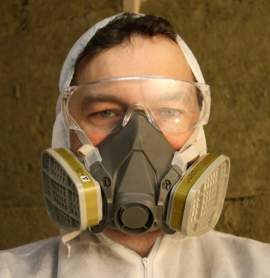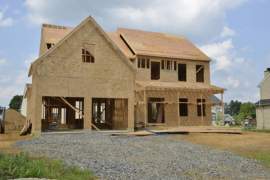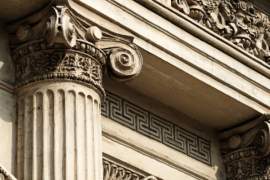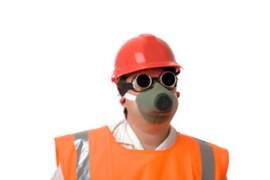
Asbestos Test
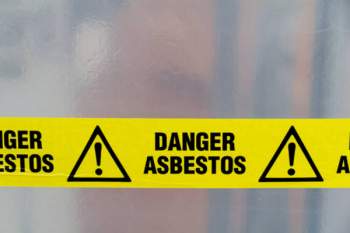
Must Read
What is an Asbestos Test? An asbestos test is a precautionary test implemented to detect asbestos in commercial or residential materials. Asbestos tests are necessary if a product is thought to contain asbestos fibers. The compulsory nature of this test is derived from asbestos’s inherently dangerous characteristics—studies have revealed that prolonged exposure to asbestos greatly increases the risk of developing several lung cancers, such as mesothelioma and/or asbestosis. The first step to conducting an asbestos test requires that you first acknowledge the United States’ Environmental Protection Agency’s list of asbestos containing materials. Note: this list does not affirm that said materials definitely contain asbestos, but instead, simply state which materials are most likely to contain the deadly filament. EPA’s List of Asbestos Containing Materials: • Cement Pipes • Cement Wallboard • Cement Siding • Asphalt Floor Tile • Vinyl Floor Tile • Vinyl Sheet Flooring • Flooring Backing • Construction Mastics (IE carpet, ceiling tile and floor tile) • Acoustical Plaster • Decorative Plaster • Textured Coatings/Paints • Spray-Applied Insulation • Fireproofing Materials • High Temperature Gaskets • Laboratory Table Tops/Hoods • Laboratory Gloves • Fire Blankets • Fire Curtains • Elevator Equipment Panels • Elevator Brake Shoes • HVAC Duct Insulation • Boiler Insulation • Breaching Insulation • Ductwork Flexible Fabric Connections • Pipe Insulation • Cooling Towers • Electrical and Heating Ducts • Chalkboards • Roofing Felt • Roofing Shingles • Thermal Paper Products • Adhesives • Wallboard • Joint Compounds • Vinyl Wall Coverings • Spackling Compounds • Base Flashing A number of products commonly found in older buildings and homes contain asbestos filaments or fibers. That being said, just because you live in an older dwelling does not necessarily mean you have to test the area for the presence of asbestos-containing materials. In general, the rule of thumb is: If walls and pipes, floors, ceilings, or any structure mentioned in the EPA’s list above is in good condition, the best thing to do is not disturb them. The Environmental Protection Agency states that asbestos fibers pose no threat so long as they are undisturbed or encased in the product. When a material deteriorates or is damaged, asbestos fibers are susceptible to becoming airborne. This poses the greatest risk to humans; inhaling these fibers is hazardous to one’s health and is the basis for cancer development. Human beings cannot get rid of asbestos fibers; the filaments remain in the lungs, putting individuals at risk of developing mesothelioma, asbestosis and lung cancer. The Environmental protection Agency suggests you hire a certified asbestos inspector to remove samples of any suspicious materials. You should never touch or come in contact with asbestos products, because additional damage will release asbestos fibers in the air, further increasing your risk of asbestos exposure. In general, the primary reasons to test for asbestos materials are: • If you live in a house or apartment building built before the 1980s • You are thinking of renovating or demolishing your house • You wish to perform asbestos abatement • You are looking to purchase an older dwelling, particularly one that needs to be remodeled • You use old products in your home, such as vinyl floor tiles or roof tiles—if these products show signs of damage you must consult with an asbestos professional. The Asbestos Testing Process: First, it is never a good idea for a homeowner to do any asbestos testing on their own. Asbestos professionals strongly recommend that you do not engage in asbestos testing by yourself because disturbing asbestos greatly increases your risk of dislodging harmful fibers when gathering samples. If you suspect materials in your house contain asbestos, the Environmental Protection Agency strongly advises that you hire a licenses asbestos inspector. Before a sample is secured, the area the asbestos is located must be cleared of all furniture. To being the testing, water mixed with soap or liquid detergent is sprayed on the surface and a one square inch piece is removed. The extracted sample will then be placed and tightly sealed in plastic bags, where the material is sent to an accredited asbestos testing lab. All accredited asbestos labs are listed under the national Voluntary Laboratory Accreditation Program, which may be attained on the EPA’s website (http://www.epa.gov/). There are two asbestos testing methods used: transmission electron microscopy and polarized light microscopy. What is Polarized Light Microscopy? Polarized light microscopy describes the collection and analysis of asbestos materials through light microscopy techniques including central-stop dispersion and phase-polar illumination microscopy. Light Microscopy has been used for over a century to determine mineral species. This form of analysis is administered through the use of specialized polarizing microscopes and bright field microscopes. When applied to asbestos analysis, scanning electron microscopes and transmission electron microscopes are used. The basic advantages of polarized light microscopy are: • This particular asbestos test allows for the basic identification of materials, primarily accomplished through the use of light microscopy and gross analysis. This allows a large base of information used to cross-reference analytical techniques. • The analysis secured by polarized light microscopy is specific to fibers. The minerals present can exist in fibrous, asbestiform, prismatic or varieties of all. Therefore, bulk analysis is inappropriate when the subject is not thought to be fibrous. • Analysis achieved by polarized light microscopy is quick, requires minimal preparation time and may be performed on-site if a microscope is available. The basic disadvantages of polarized light microscopy are: • Even through the use of phase-polar illumination, not all asbestos fibers will be seen. This is a chief problem for very low asbestos concentrations where large bundles of asbestos fibers may not be seen to allow identification by inference. • This method requires a significant degree of sophistication and skill. A microscopist and/or an analyst must be experienced with this particular asbestos test. • This asbestos test method uses only a small amount of material for analysis. This often leads to false reports and/or sampling biases. This is particularly true if the sample if not uniform. • This particular asbestos test may secure fibers that are not distinguishable or easily identifiable. Asbestos fibers are undetectable without the use of a special microscope. Analysis by accredited testing laboratories is the only means to definitively know whether a material contains asbestos fibers. The Environmental Protection Agency requires that the asbestos of suspect products or materials be determined through analysis with polarized light microscopes. PLM asbestos tests will affirm the type of asbestos and the percent in the sample. Asbestos content for manufactured items ranges from one percent to one hundred percent. The primary types of asbestos used in the commercial field are: amosite, crocidolite and chrysotile. Other forms, such as anthophyllite, Tremolite and actinolite are less common in the commercial field. The EPA defines asbestos containing materials as mixture of individual asbestos fibers and binding materials. Chrysotile is the most common form of asbestos found in commercial buildings. Also referred to as white asbestos, this type of asbestos comprises roughly 90-95% of all asbestos contained commercial buildings in the United States. Amosite is the second most common type of asbestos found in buildings in the United States. This form of asbestos is known as “brown asbestos.” Lastly, “blue asbestos” or crocidolite asbestos is located in specialized high temperature areas or applications. Instructions for Self-Removal: Note: asbestos materials should not be tested without a certified professional present; however, if you choose to test said materials by yourself, please follow these steps. (Before securing an asbestos sample, call your local asbestos laboratory—that will run your sample—for advice regarding the sampling procedure, the container to transport and the amount needed.) You cannot tell whether a material contains asbestos simply by staring at it. If you are in doubt, treat the material as if it contains asbestos dust, fibers or filaments. An asbestos professional should take all gathered samples for analysis; professionals know what to look for and how to impede the asbestos from becoming airborne. If you choose to take the samples yourself, make sure you do not release fibers into the air or onto yourself. Also, remember that only materials that are damaged or disturbed should be taken for sample. Materials that are in good condition and are not susceptible to contact should be left alone. If you are sampling asbestos-containing materials you should have as much information as possible concerning the handle of asbestos before sampling, and at a minimum, you should observe the following maneuvers or procedures: • Make sure nobody is around or in the room with you when sampling is complete • Wear disposable gloves and wash your hands after you secure your sample • Shut down any cooling or heating system to minimize the spread of asbestos fibers • Do not disturb the asbestos materials; contact should be kept at a minimum • Place plastic sheets on the floor below the area that is to be sampled • Using a fine mist of water, wet the asbestos material; you should also splash a few drops of detergent on the targeted sample. The detergent and water mist will reduce the release of asbestos filaments. • Carefully extract or cut a piece from the depth of the material; you may cut the asbestos with a corer, a small knife or any other sharp object. Place the piece into a clean container (small glass, film canister, or a high quality re-sealable plastic bag). • Vacuum or tight seal the container after the sample is placed inside • Carefully get rid of the plastic sheet. Use a damp towel to clean the material that sits on the outside of the container or around the sampled area. Dispose the asbestos materials according to local and/or state procedures. • Label the container with an ID number and state where and when the sample was procured • Patch the area with the smallest piece of duct tape to prevent the release of asbestos dust into the air.





